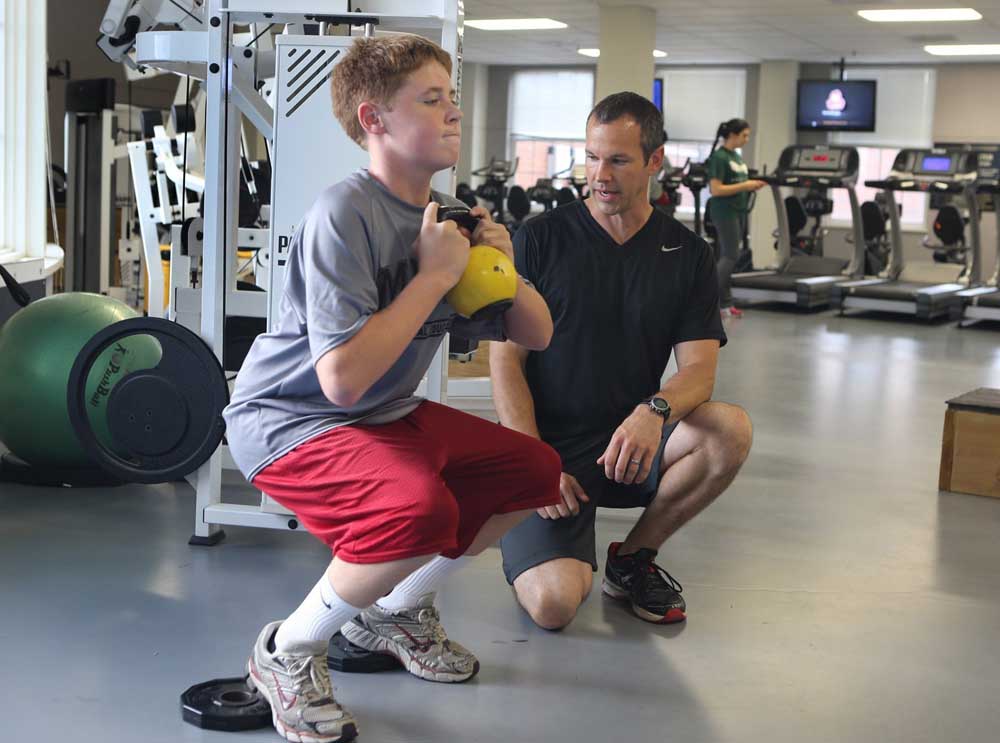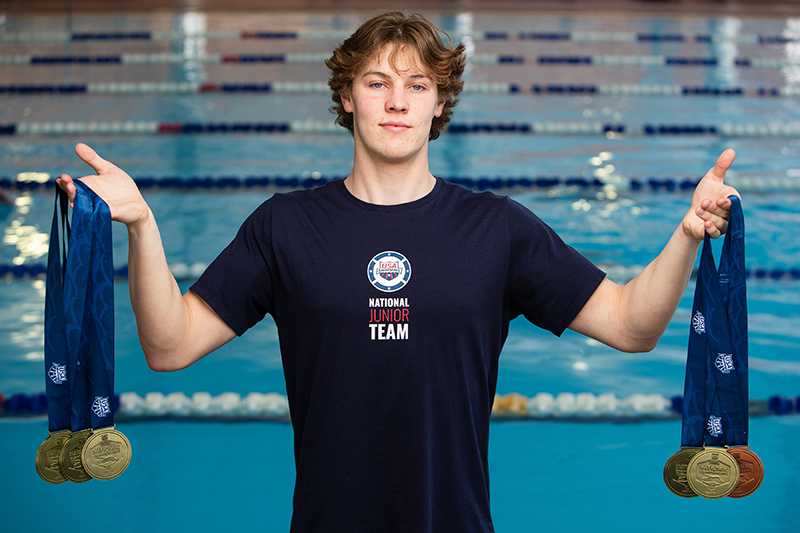For kids, a renewed focus on fitness basics
Published 12:00 am Thursday, November 28, 2013

- Lay helps Chris Swanson, 13, with a strength and conditioning program.
ST. LOUIS — Eric Lay, the head trainer at Mary Institute and St. Louis Country Day School, loves to see student athletes succeed, but he and fellow trainers aren’t always impressed with fastballs or hat-tricks.
They’re more concerned about whether the athletes can do a decent push-up without their bodies undulating like a worm. Can they do leg lunges without flailing their arms, wobbling or falling to one side? Are they able to touch their toes? Pull up to their chin? Can they shuttle back and forth?
In a nutshell, trainers want to know whether these kids really know how to properly and safely move, and later, can they add strength to those established movements?
It’s all part of a growing push among trainers and others in fitness fields to get schools, parents, coaches and kids back to basics with physical fitness. Instead of focusing primarily on acquiring fitness through organized youth sports — an exploding business with many well-meaning but poorly trained coaches — they want parents and kids to refocus and acquire proper movement skills beginning as early as kindergarten and progressing all the way through high school.
If it sounds like a throwback to gym class, it is. Those movements first emphasized in P.E. — skipping, lunging, twisting, jumping, stopping and starting, to name a few — are the building blocks of high-performing athletes and the key to enjoying all sorts of recreational activities that encourage lifelong fitness, said Larry Meadors, a former national high school strength and conditioning coach with the National Association of Strength and Fitness and author of a paper urging “physical literacy” among youth.
But yet, “For some ungodly reason we’ve skipped teaching fundamental movement,” Meadors said.
“We all learned the alphabet, and as we learned the alphabet we learned how to put two letters and then three and then four to form words, and pretty soon we had a word, a sentence, a paragraph, a chapter, a book. And you should apply the same things for athletics.”
In an age where kids have seemingly endless opportunities to play sports outside of school, all-around good movement is not always something Lay says he sees with seasoned middle and high school players. That particularly can be the case with specialized year-round, single sport athletes. Often he’ll see unbalanced movement, out of whack from years of kicking with one leg in soccer or pitching and throwing on a softball or baseball team.
Those physical fitness deficits can lead to injuries. That’s because the kids do the same thing over and over again, and coaches and organizations can have little emphasis on proper training beyond a few sometimes misguided skills drills.
“Parents want their kids to be physically active, and sports is an option. So a lot of people think, if my kid is in a sport, that takes care of it,” Lay said. “Sport skills are great, but there has to also be some training in fundamental movements.”
Meadors, a retired 50-year educator who runs a conditioning program in the Burnsville, Minn., school district, said he’s seen a significant decline in movement skills in kids over the past decade.
“I have 11th- and 12th-graders — 16-, 17- and 18-year-olds — that have the same absolute movement skill deficiencies as 6-year-olds do.”
Part of it is due to a decline in physical education in schools and a more sedentary lifestyle. Yet kids also face problems in competitive youth sports, where they learn a limited regimen of movements basic to the sport but may lack other critical movement skills to help them fully succeed.
“A sports skill is only a sports skill, it’s part of the game. But there is a ton of stuff the human body does above those skills that hone that performance,” Meadors said.
Youth sports in several metropolitan areas is exploding at a very early age with increased competition, seemingly unlimited options to play and pressure to compete in a single sport, year-round. It has led to a rapid increase in injuries even before middle school.
More than 3.5 million kids 14 and younger are treated annually for sports injuries, and the numbers are increasing. More than half of all youth sports injuries are preventable. In about half the cases, the injuries are associated with overuse, often linked with the growing trend of children specializing in one sport and playing year-round.
In a paper published with the National Strength and Conditioning Association, Meadors said musculoskeletal injuries in youth are the result of overall low strength levels, incorrect landing mechanics, incorrect deceleration techniques, ligament looseness, muscle tightness, overly developed quadriceps, and over-reliance on a particular limb. These essentially are tied to poor conditioning and a lack of knowing how to move properly in a variety of fitness situations.
Many kids simply don’t know how to properly slow down and stop when running. Others can’t land a jump properly, he said.
Meadors says all he asks for is a greater conversation among schools, parents, coaches and kids to identify the big connection between proper movement skills, lifelong health and true athletic performance.
At this point, in the midst of intense game schedules, coaches lack the time to learn proper conditioning or incorporate it into limited practice schedules, he said.
“When we get to the point of 3.5 million kids injured in a given year — that’s the fourth leading health risk by the World Health Organization. There’s something wrong about that,” he said. “The media loves to hit on the sedentary side and the link to obesity in kids, and that’s a real critical issue. But so is misuse of kids in sports and the mis-training of children.”







